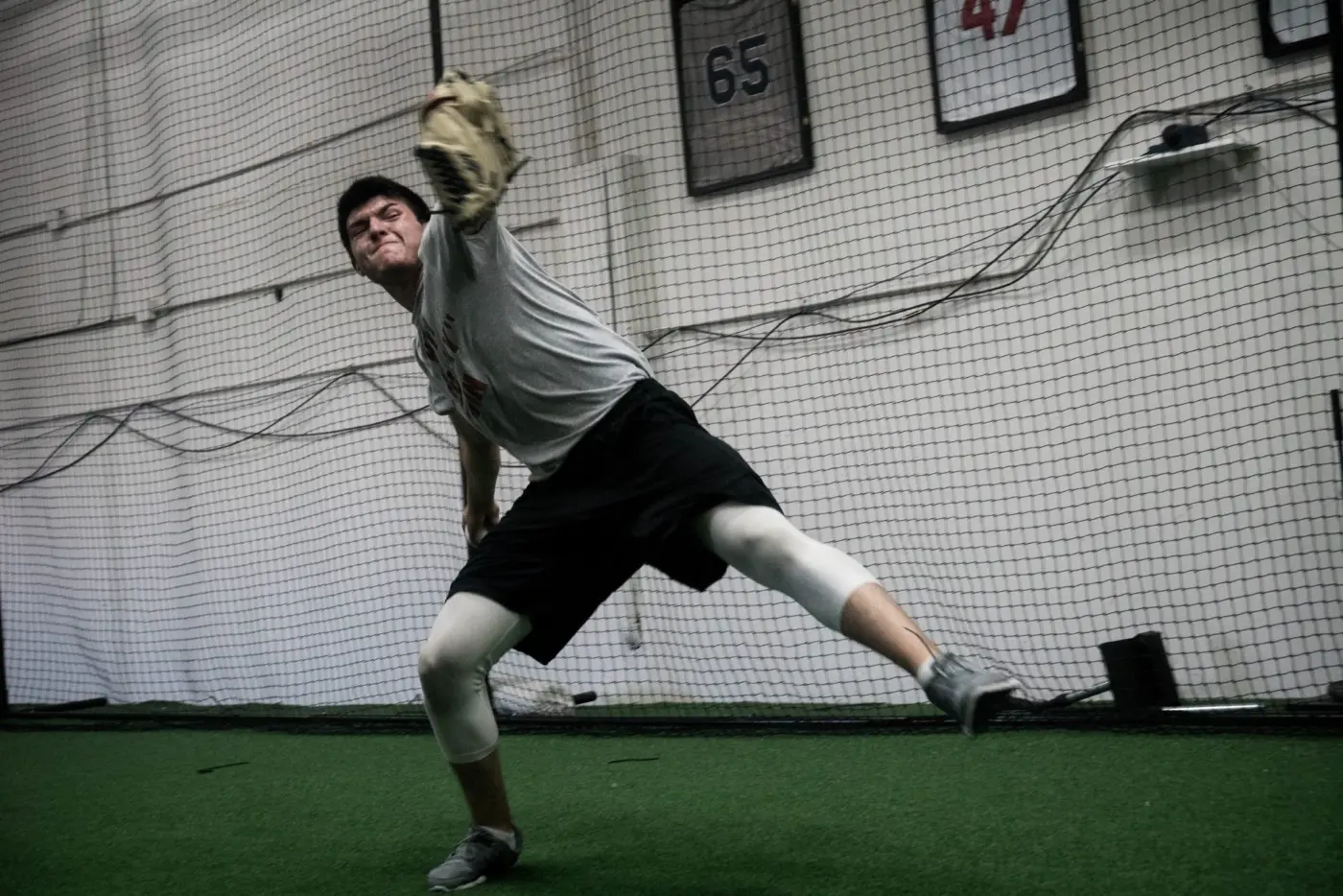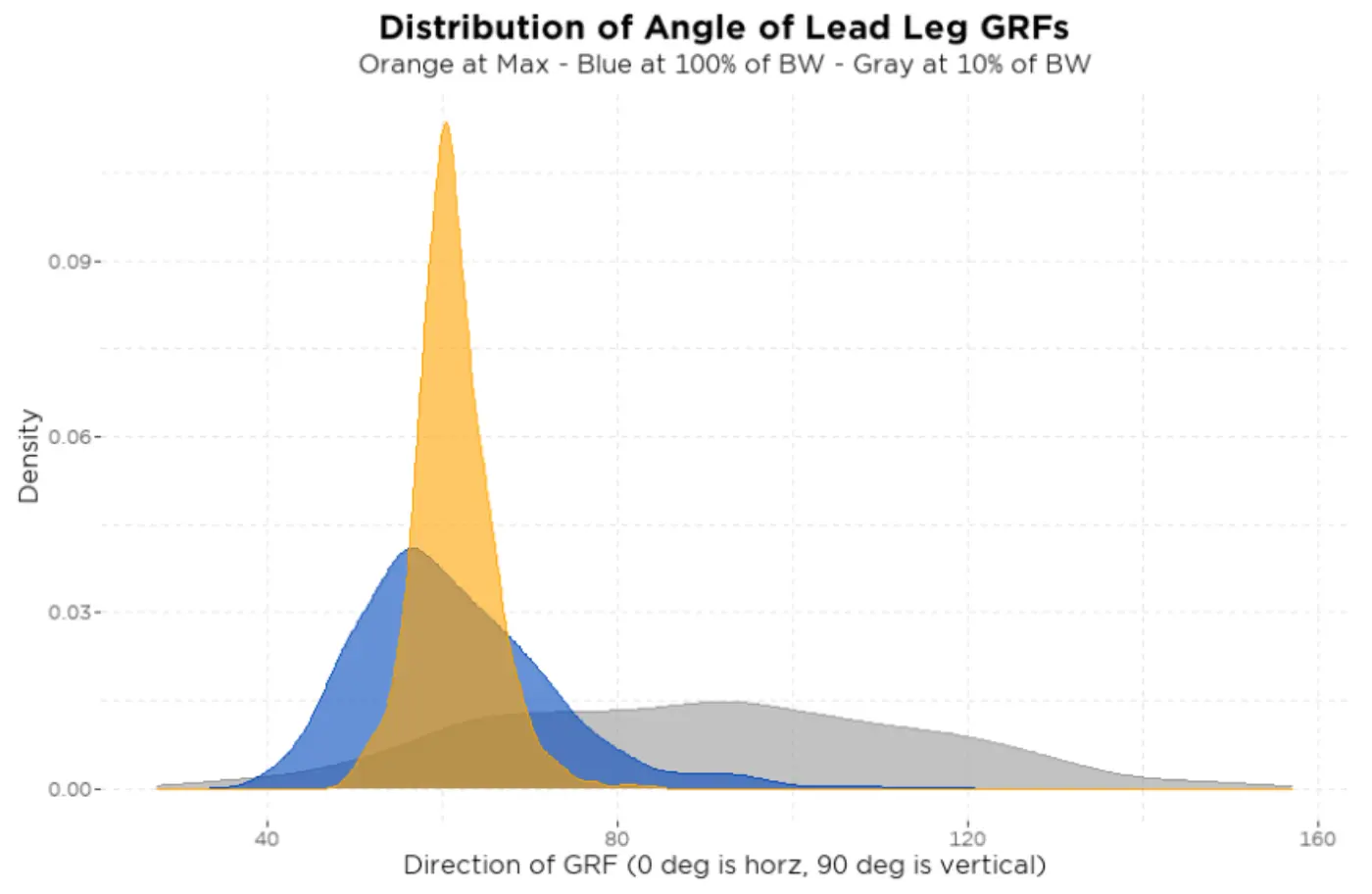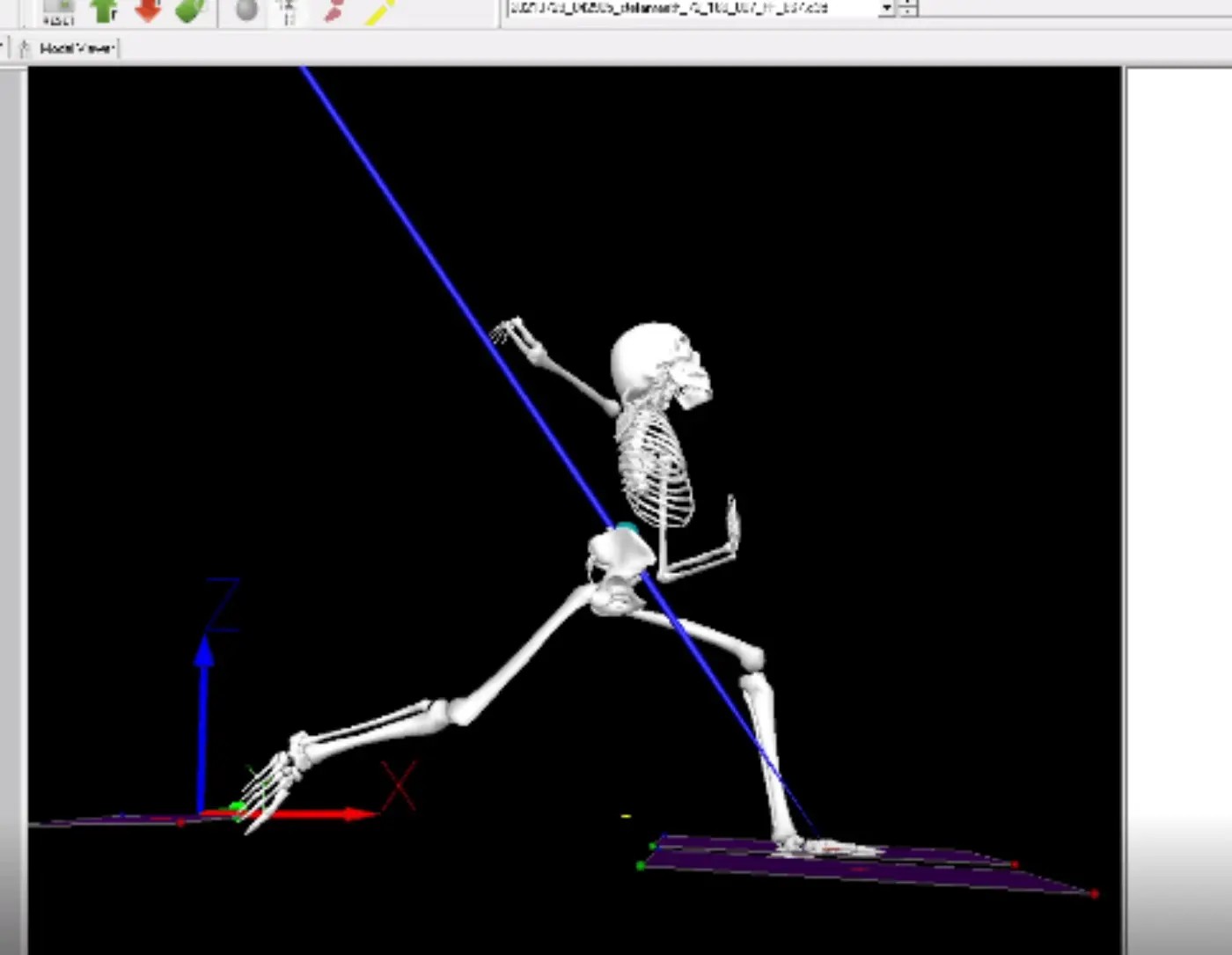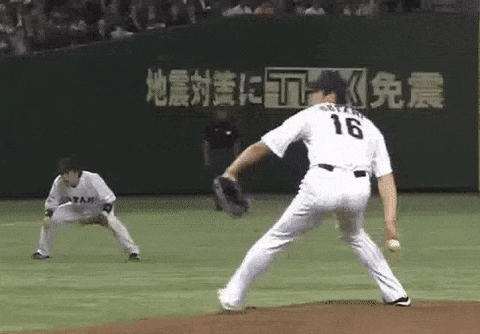Efficient Front Leg Mechanics that Lead to High Velocity

The lead leg block in pitching is rarely understood correctly and is often analyzed from a baseball-specific viewpoint. Looking closer at the pitching mechanics of the lead leg may require us to step outside our standard model of analyzing mechanics.
What is the purpose of the lower half pitching mechanics?
There are a couple of ways to look at this question. Between published research, research in our own lab and training high level athletes over the last several years we’ve gone through several steps in trying to figure out the best answer to this question.
- Measuring the quality of a lead leg block through measures such as knee extension velocity, flexion in the lead leg etc.
- Using force plates to see if our kinematic indicators of lead leg block, listed above, resulted in good ground reaction forces. Which they do!
- Recently we’ve figured out how to directly measure the energy developed in the front leg and how it move up the kinetic chain
Where has that lead us?
It’s best to think of the lower half as primarily a stabilizer for pitchers to rotate their upper half really fast.
Now that we’ve defined the purpose let’s take a closer look at the front leg, we’ll cover the lead leg from the ground up in this blog:
- defining what a lead leg block is
- looking closer at how the front foot lands
- looking at what research can tell us about the lead leg block
What is a Lead Leg Block?
When discussing the pitching delivery the lead leg block is how an athlete lands and moves their front leg interacting with the ground. Since athletes generate force from the ground up, the lead leg is a key factor in stopping the momentum created from their back leg and redirecting that energy up the chain to torso rotation and to the throwing arm.
In short, a lead leg block is how you plant around your front leg and create an effective base to rotate around.
Pitching Front Foot Landing
Breaking things down from an anatomical and kinesiological viewpoint, we start with Frans Bosch talking about the “footstrike from above”. The idea is that the footstrike should not “slide into” contact with the ground. Instead it should be directed nearly with the line of expected Ground Reaction Forces (GRFs) we are hoping to create.
We can take a closer look at this idea by looking at the angle of force with the force plates in our lab at three distinct points of time.
- When the lead leg GRF first exceeds 10% of body weight to get when the foot first makes contact with the ground, shown with the gray shape below.
- When the lead leg GRF first exceeds 100% of body weight to get an idea of the direction of early force put into the ground, shown with the blue shape below.
- When the lead leg GRF reaches its greatest magnitude to see the direction that the force is put, shown with the orange shape below.

Looking at this graph we can see:
- With 10% bodyweight (the gray shape) there is a wide range of angles of force.
- Pitcher’s tend to cluster closer together around 100% bodyweight (shown in the blue) around 55 degrees. With a range from 40-80 degrees.
- At the max force they’re producing force into the ground that’s fairly close to one another (shown in the orange) around 60 degrees. Ranging from 50-75 degrees.
Looking at the relationship between these angles and velocity, we don’t see a very strong correlation between any of them. But we do see a slight negative correlation between the angle at 100% bodyweight. This would suggest that at 100% bodyweight, as the athlete is blocking, it’s better to produce more horizontal force. This would suggest is not necessarily down put producing force back up the leg.
Having trouble picturing this?
First, imagine a line of force that goes only vertically. From where the front leg lands going up towards the sky.
Then there are forwards that can go towards home plate or towards second base.
What we’re looking for is force that goes back at an angle from the angle up to the front hip.

What Can Research Tell us about the Lead Leg Block?
Baseball-specific research corroborates this finding; in Stride Leg Ground Reaction Forces Predict Throwing Velocity in Adult Recreational Baseball Pitchers (McNally, Borstad, Onate, Chaudhari; JSCR Oct 2015) the following data was presented:
Stride leg ground reaction forces during the arm-cocking and arm-acceleration phases were strongly correlated with ball velocity (r2 = 0.45-0.61), whereas drive leg ground reaction forces showed no significant correlations. Stepwise linear regression analysis found that peak stride leg ground reaction force during the arm-cocking phase was the best predictor of ball velocity (r2 = 0.61) among drive and stride leg ground reaction forces.
In an analysis of this research paper, Graeme Lehman discussed it further, stating:
The most important direction however wasn’t the vertical but rather in the anterior/posterior direction. Here is a direct quote from the study.
“Force imparted by the stride leg against the direction of the throw appears to contribute strongly to achieve maximum throwing velocity”
The fact that the stride leg is applying force AGAINST the direction of the throw means that this force is being applied in a posterior direction. The back leg gets our momentum going towards the plate in an anterior direction but the we must “slam on the brakes” and stop our momentum by applying force backwards with the front leg. This catapults our body and ultimately the baseball towards home plate.
While back leg “drive” did NOT significantly correlate with increased ball velocity, lead leg posterior force did.
Now the question is: How do you train this mechanism not only mechanically, but using training modalities in the weight room and track to ensure it transfers properly to the pitching mound and develops strength/power over the range of motion expressed in the pitching delivery? That’s a question for another day!
For more information on our flagship book on developing elite fastball velocity, be sure to check out Hacking the Kinetic Chain!
This post was updated by Michael O’connell on 4/16/2022
Comment section
Add a Comment
You must be logged in to post a comment.

Jordan -
Greetings, Kyle!
This is good stuff. Very interesting research on the legs’ correlations to velocity. I have a question regarding the imMotus training and something you said in the article, though.
You wrote in the article:
“The idea is that the footstrike should not “slide into” contact with the ground but rather should be directed nearly with the line of expected Ground Reaction Forces (GRFs) we are hoping to create.”
Since the pitcher is moving forward as well as somewhat downhill, sliding into contact would be ill advised for obvious reasons then. But wouldn’t that mean we would want the foot plant want to create GRF that are- for lack of better terms- backward and somewhat uphill?
If so, with the imMotus training video, doesn’t lifting the “lead” leg up so high before planting on the box force the trainee into a more “straight down” movement of the foot and even a backwards pulling movement of the leg? Wouldn’t this only create more of a forward-pulling mechanism from the front leg rather than an opposite resisting force that would drive backwards and slightly “uphill” to slam on the breaks?
I am just trying to understand everything here as I think this information is vital in changing how we often think of velocity as being generated from the legs. I look forward to your response and figuring out what it is I am missing here to better understand your ideas. Thanks for your time!
CoachCramphin -
Could this be a similar mechanic to the wrist stopping in a bullwhip motion? https://www.youtube.com/watch?v=jMFL3UQ06FU
CoachCramphin -
I think of the whip as a useful example since it’s an almost literal example of a “kinetic chain”. Am I oversimplifying the metaphor too much?
From 77mph to 90mph in Five Months - The Joe Marsh Story -
[…] was a fairly long arm action that had little intent to actually throw the baseball hard, and poor bracing/leverage around the thoracic spine. He was also pretty weak in his barbell lifts. This was all good: There […]
Analyzing Weight Shift and Ground Force in the Baseball Swing | BodiTrak Performance -
[…] Baseball’s founder, Kyle Boddy, outlined the importance of the lead leg in pitching in this 2013 blog post. In the post, he reviewed a 2015 paper which concluded that “Stride leg ground reaction forces […]